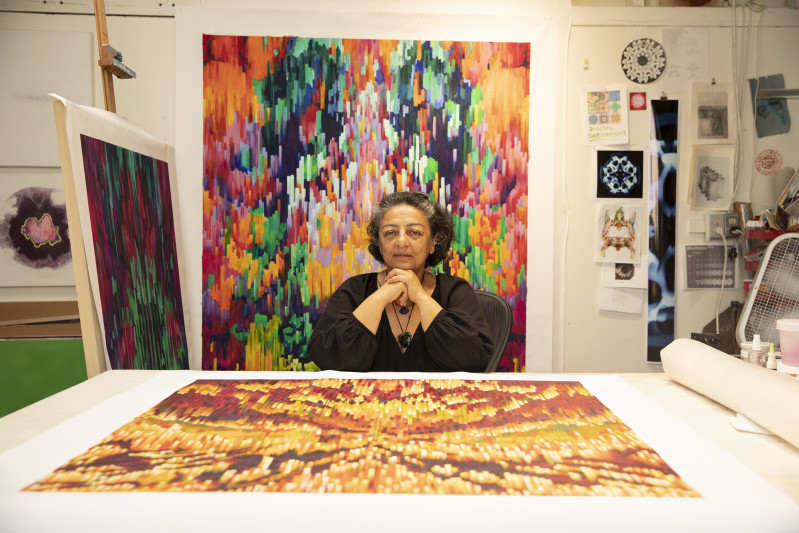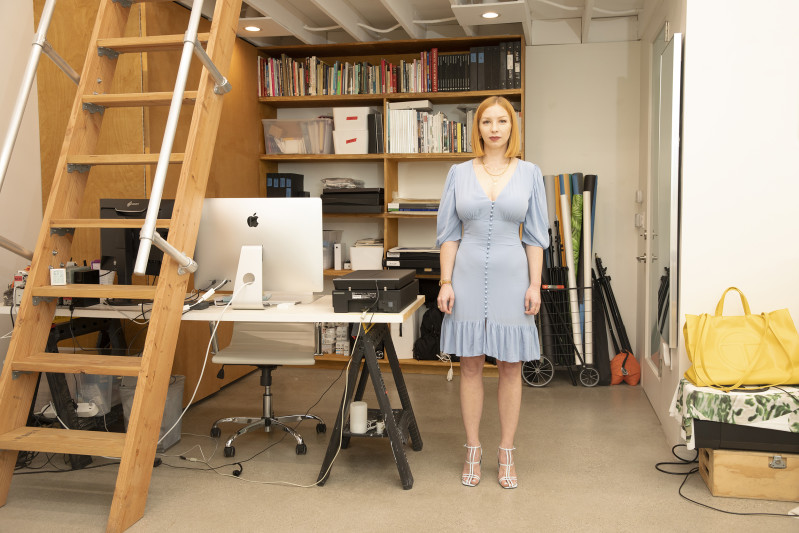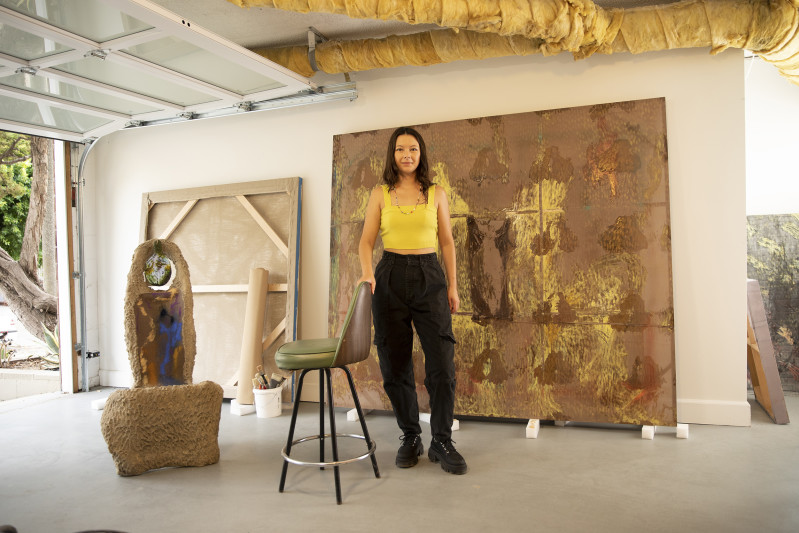Yassi Mazandi
Interview
October 4, 2022

Yassi Mazandi in her studio in LA
You have an extensive background story, being born in Iran, living in the UK, and now LA. Do you incorporate elements from these different cultures into your artworks?
I’m generally very confused about all that. But I have memories from my childhood in Iran that influence me. My sculpture, Language of the Birds, that is installed at LACMA right now, is connected to an epic 12th Century Persian poem I was introduced to by my grandmother.
Please share more about your background.
I was born in Iran and left for school in Europe when I was around seven years old. I went to ten different schools, from the age of seven to seventeen, in three countries. Because of that instability and polyglotism, the only things that have ever made sense – and of which I wasn’t afraid as subjects at school – were mathematics and art. When I walked into a class, I recognized them. They were familiar, they hadn’t changed language.
I wanted to go to art school when I was a teenager but wasn’t allowed to; my parents didn’t think it was appropriate for a girl to become an artist. I later moved to New York to be with my husband. Eventually, sometime between the ages of 35 and 40, I decided I was going to do what I wanted and began working on my artistic practice.
Because I didn’t go to art school or university, I have absolutely no art education other than my school art lessons as a child. I think that’s to my advantage because I’m not restricted by someone else’s ABCs. I am a constant experimenter and some of my mistakes have ended up becoming the base for my work.
Is your love for art and mathematics present in your works?
With math, it is more of an affinity to it than love. But it’s about symmetry, which I see in so much of nature and which informs a lot of my art. Nature, that I do love. Take the example of my painting Tara. The inspiration is actually from my often symmetrical digital video work, which, in turn, is based on X-rays of my porcelain works. But, in its final form, the painting is also heavily influenced by a 17th or 18th century Tibetan thangka. In the center of my painting, there’s an impressionistic goddess. The painting is based on nearly equal symmetry or balance. The way your eye travels around the painting or each color is placed, so it’s not perfect, but nearly equal. This is a bit like a human face or an orchid flower. When you analyze a face, one side is different from the other. So, asymmetrical but with the appearance of symmetry.

Yassi Mazandi, Tree, 2022, Acrylic on canvas, 101.6 x 101.6 cm
You now live in LA, what is Los Angeles to you?
Home. A massive suburbia, connected by palm trees that aren’t meant to be here anyway.
Do you think that there is a specific artistic expression in LA which is shared by multiple artists?
LA is huge and it is such a diverse community that it is difficult to generalize. There’s something for every single culture and style. As an example, I’ve noticed a lot of younger generation artists with Hispanic backgrounds that do large scale artworks about life in Southern California. Because of LA’s size and diversity, there’s a place for everybody here.
Your painting process looks very tedious! Could you explain the process?
My painting process is indeed very detailed and painstaking, though I enjoy it, for me it is not tedious. The reason for all the detail is that the inspiration for my paintings – in fact, nearly everything in my artistic practice – has its roots or origins in my core ceramic work. That is why I refer to so much of my work as “Born Porcelain.”
Nearly twenty years ago, I began scanning some of my porcelain and clay pieces, works that I hand-throw on a potter’s wheel, then hand-carve. At the time, it was with the idea that larger scale 3D printing might become affordable, and it has taken about two decades for that to be close to true! But, over the years, I have ended up using in many other ways the hundreds of X-rays those scans produced of any given artwork of mine. Think of the ceramic piece like the base of a tree trunk: branches of that tree trunk spread out and become Sculptographs on paper and canvas, or stone sculptures, bronze and other metal artworks, as well as video artworks – both traditional and NFT videos – and AR, or, using my term, SculptARs.
All of which brings us back to the paintings. Each is inspired by a still image I select from one of my various almost always symmetrical videos. It sounds like a full circle, physical ceramic to X-rays to digital video and back to physical paintings but, by the end of it, you cannot see the ceramic inspiration in those paintings anymore.
Finally, what is your approach to being an artist?
Gut. For me, it’s in my gut that something makes sense, and I should try it. If it’s a mistake that’s fine, I’ve learned something along the way.

Yassi Mazandi, Tara, 2022, Acrylic on canvas, 182.8 x 152.4 cm
Photos by Daniel Sahlberg.



